“There’s nothing like the prospect of being hanged in the morning to focus the mind.”
Eben Upton is describing the weight of public expectation that fell on his shoulders after the prototype of the $35 Raspberry Pi computer he co-created was revealed online in May 2011.
After five years of tinkering with the board’s design in relative anonymity, suddenly the number of people aware of the project exploded, with the YouTube video of the early Pi racking up 600,000 views in just two days.
Initially Upton was delighted at the interest in the report by BBC tech correspondent Rory Cellan-Jones, and said as much to his wife Liz, who tempered his enthusiasm with a dose of harsh reality.
“She said to me, ‘You know you’ve actually got to do this now, right?’.
“That was a tough moment, realizing that we’d actually told people we were going to do it, and we had to do it. We could still be faffing about to this day, if it wasn’t for Rory.”
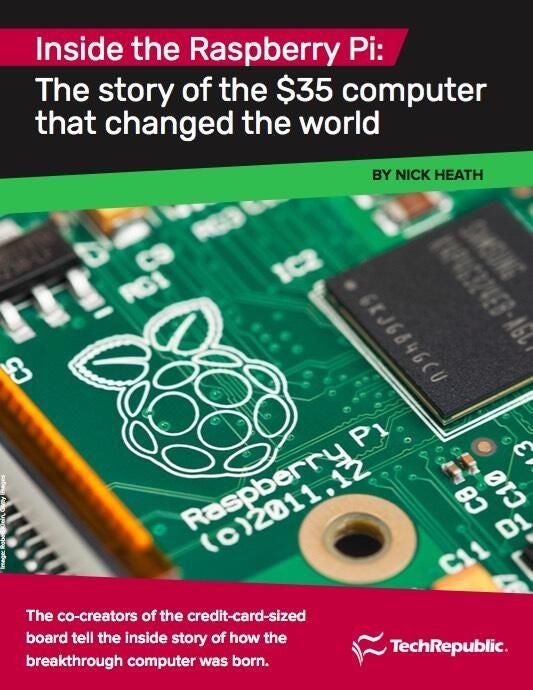
Download this article as a PDF (free registration required).
Today the Raspberry Pi is a phenomenon, the world’s third best-selling, general-purpose computer. If you’re interested in computers, chances are you’ve got one of the tiny British-made boards tucked away somewhere. It’s inside laptops, tablets, and robots; it has run experiments on board the International Space Station; it has spawned a massive ecosystem of kits for learning about computers; and it has even broken into mainstream media, cropping up in TV shows like Mr Robot and movies like Big Hero 6. That’s not to mention the computers’ role in business, where they serve as everything from thin clients to industrial control systems.
But this success was by no means guaranteed. The Raspberry Pi began as something of a quixotic endeavour, designed to rekindle the curiosity about computing in a generation immersed in technology but indifferent to how it worked. For Upton, the seed was planted in 2006, during his time as a director of studies at the University of Cambridge in the UK, when he was struck by how few people were applying to study computer science.
“The numbers were just awful, they had dropped off a cliff. We’d gone from having about 600 applicants for 80 or 90 places at the turn of the century down to under 250 people.”
Faced with such disinterest, Upton asked ‘Where did those applicants go?’ and ‘How do we get them back?’.
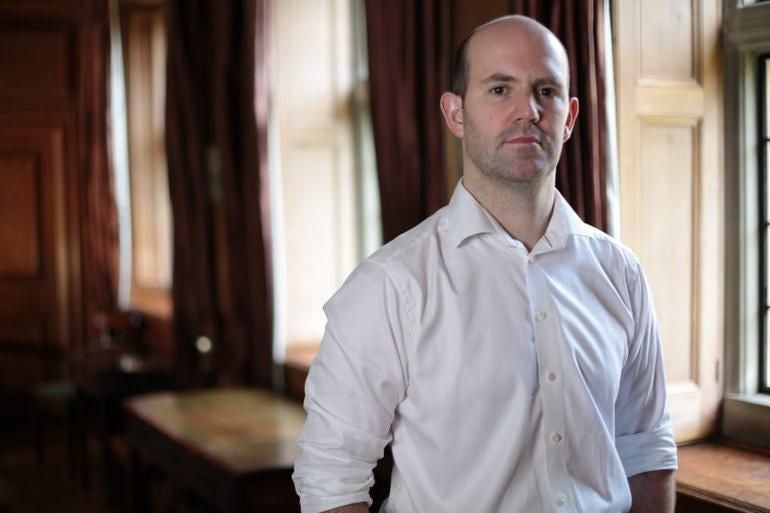
Image: Raspberry Pi Foundation
“What we didn’t realize at the time was that the easily programmable home computers of the 1980s had been a very important source of talent for us,” he says.
“As those machines went away in the 1990s, the supply of kids who would learn to program also went away, and then we woke up 10 years later and we’ve got no-one applying to our course.”
“So really, Raspberry Pi is a response to that. It’s a very conscious attempt to reboot the sort of machines that were available when I was a child.”
Upton and his contemporaries grew up in the 1980s, when computers like the BBC Micro in the UK and the Commodore 64 in the US were finding their way into homes. To the average modern computer user, the BBC Micro would seem hugely intimidating: A brown slab of a machine that booted to a simple flashing cursor, with no on-screen explanation as to what to do next.
But for Upton and many children of the 1980s, that blinking cursor on an almost empty screen was an invitation to fill in the blanks, to start typing the BASIC programming language that made the BBC Micro come alive with sound and color.
Fast-forward 20 years, however, and the dominant computers–games consoles and later tablets and smartphones–no longer offered an invitation to create, but rather to consume.
Upton recalls a bonfire party in 2007 where an 11-year-old boy told him he wanted to be an electrical engineer, and his disappointment at realizing the boy didn’t have access to a computer he could program on.
“I said, ‘Oh, what computer have you got?’. He said, ‘I’ve got a Nintendo Wii’. And there was just that awful feeling about there being a kid who was excited, a kid who was showing concrete interest in our profession, and who didn’t have access to a programmable computer, a computer of any sort. He just had a games console.”
At this time Upton was working as a system-on-a-chip architect at chip designer Broadcom, and realized he had the skills to try to halt this drift away from computers that encouraged users to code.
“I’d been building little computers for a long time for a hobby. So, the ability to build little computers, and the realization that the lack of little computers was a problem, it came together, and Raspberry Pi was an intersection of those two things,” he says.
Download this article as a PDF (free registration required).
Why the Raspberry Pi only costs $35
The idea was to create a computer that wasn’t just cheap, it was almost disposable, with a price tag so low that kids wouldn’t be afraid to carry it with them or to hook the Raspberry Pi up to other hardware and build their own gadgets.
“The idea of a breakable computer was important to us,” says Upton.
“It had to be at a price point where it didn’t feel that you were risking the world by connecting wires to it.”
But setting the price so low posed a challenge. In the mid-2000s, $35 computers didn’t really exist, and Upton’s very early creations bear little resemblance to what would finally become the Raspberry Pi.
His first attempt at a Pi in 2006 was a machine so simple, relative to the computer that would be released six years later, that it could be pieced together by hand, using off-the-shelf chips and components and a soldering iron.
With its oversized processors and resistors, the prototype looks like a relic from a bygone age–and, to an extent, it was, replicating the power of the BBC Micro on which Upton cut his teeth in the early 1980s.
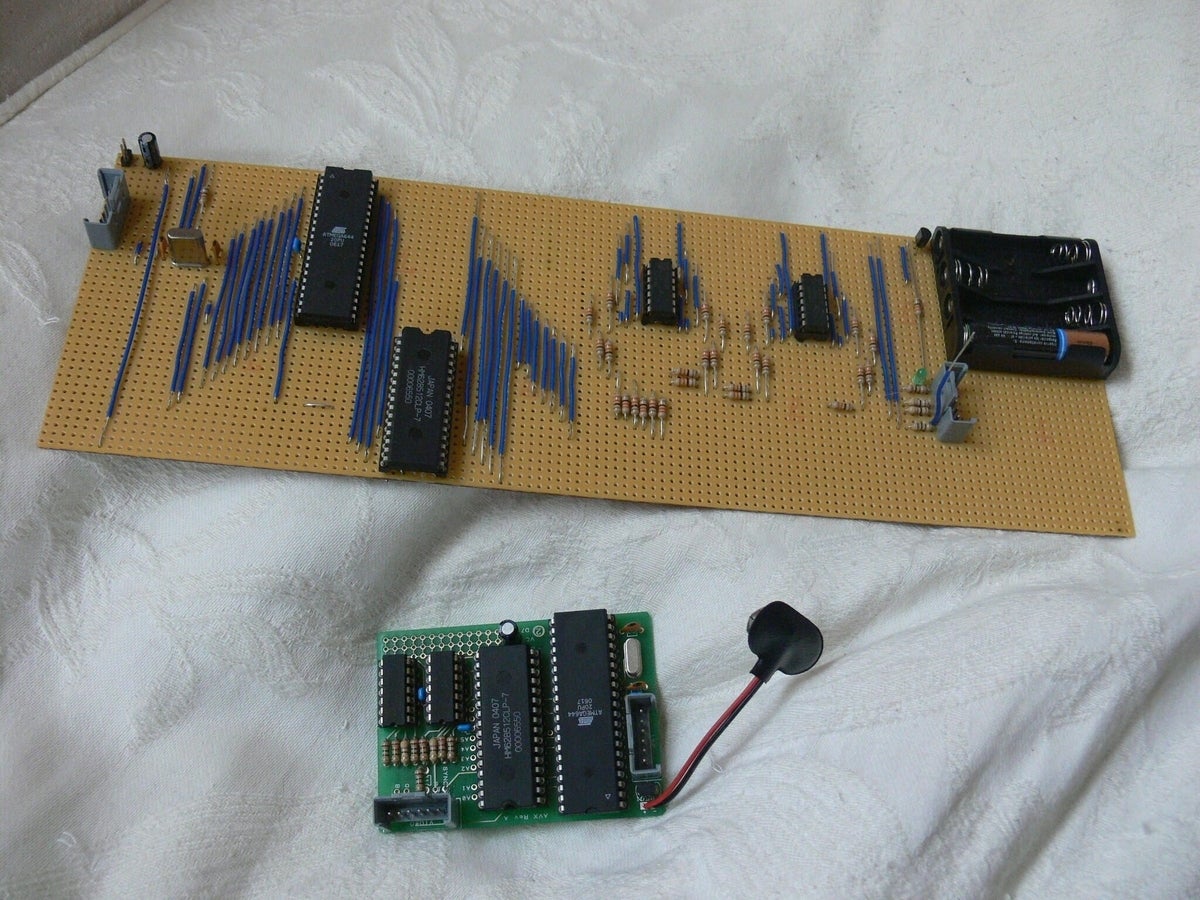
Image: Raspberry Pi Foundation
“The first thing I built that you could call a Raspberry Pi was based on an Atmel microcontroller, and could render a little bit of 3D graphics; it was probably about as powerful as a BBC Micro, but you could build it yourself with a soldering iron. That was what was nice about it, that no subsequent Raspberry Pi has replicated.”
Upton didn’t take the design further, feeling it wasn’t sufficiently powerful or usable. But he didn’t lose his drive to find ways to rekindle interest in computer science, and continued to discuss solutions with fellow engineers and academics. Matters came to a head in 2008, when Upton sat down with University of Cambridge professor Alan Mycroft, electronics engineer Pete Lomas, and several others, and hammered out an overview of a low-cost computer for kids.
Lomas is founder of electronic design consultancy Norcott Technologies and designed the printed circuit board (PCB) layout for the first Pi. He described that October meeting as the deciding factor in the Raspberry Pi’s creation.
“All of us had ideas along a similar line. It just needed that catalytic meeting to make it all happen,” Lomas says.
Their vision, he says, was to make a machine that offered a window into how computers work–not to ship a tightly shut black box, but instead a bare board where kids could learn each component, could feel the processor getting hot as it worked, and delve into the code for the open-source software running on the board.
Download this article as a PDF (free registration required).
How the Raspberry Pi got its name
2008 was also the year that would see Upton create the prototype that would give the Raspberry Pi its name.
While this second prototype was more powerful than his initial hand-built creation, the 2008 machine was still not a full-fledged computer like the Raspberry Pi, only running on a Broadcom Graphics Processing Unit (GPU) and Vector Processing Unit (VPU)–chips that typically form part of a wider computer system. Upton describes it as “a lashed-up thing built on top of Broadcom dev boards”.
Once again, that prototype had echoes of the BBC Micro that Upton grew up using. While far more powerful than the 1980s machine, the prototype also booted straight into a blinking cursor, which this time ran any Python code typed into it.
“Just as a BBC Micro boots into BASIC, this would boot into a version of Python,” says Upton, explaining that this was the origin of the name, Pi.
As for the name Raspberry, on one level there was a desire to following in the fruity tradition of Apple, Apricot Computers, and Acorn (ancestor of chip designer Arm and creator of the BBC Micro), but also a tongue-in-cheek reference to the irreverent and scrappy nature of the project at the time.
“There’s a lot of fruit-named computer companies, and the ‘blowing a raspberry’ thing was also deliberate,” says Upton.
Early the following year, Upton, Lomas, Mycroft, Elite creator David Braben, and Cambridge University lecturers Jack Lang and Rob Mullins would create the Raspberry Pi Foundation, a charity focused on giving people worldwide the knowledge and tools needed to create computer software and hardware.
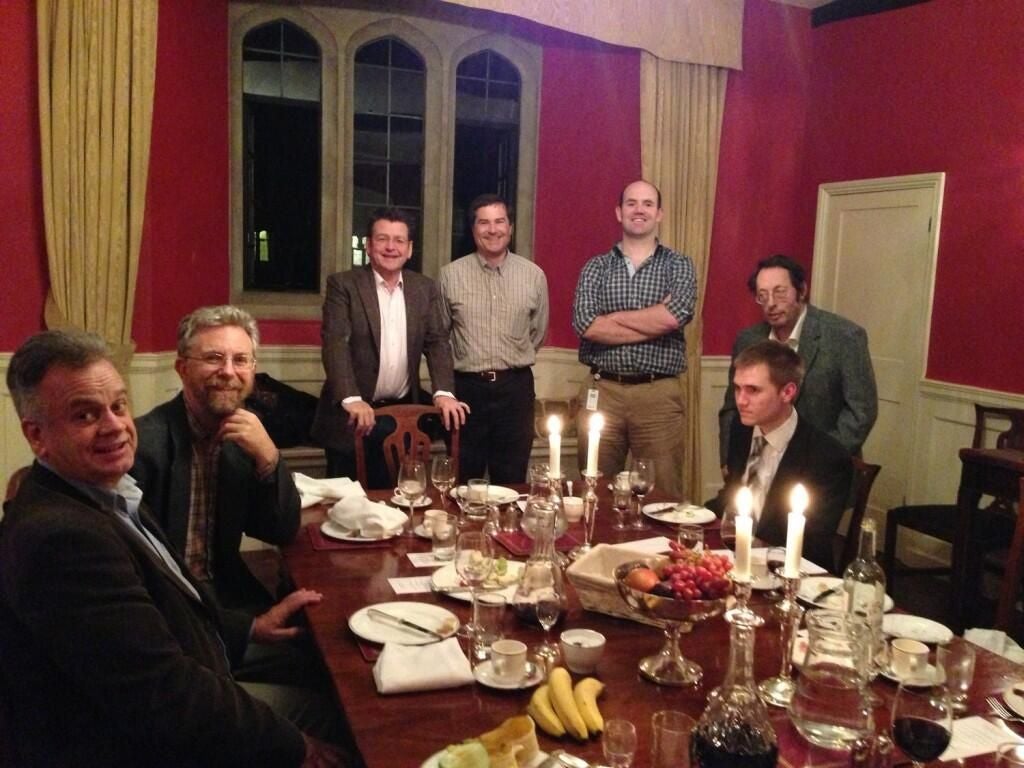
Image: Raspberry Pi Foundation
But even if the name and foundation had fallen into place, the design of the actual computer was starting to flounder. Upton and Lomas couldn’t find a processor that fit their needs for such a low price, and there were all sorts of obstacles to designing the Raspberry Pi.
“We had a concept designed around another processor in 2009. That was when we went into the doldrums of despondency because that just wasn’t going to work,” says Lomas.
“There were too many parts, the PCB [printed circuit board] was going to be too big, it was going to consume too much power, it had all sorts of things that were wrong with it.”
Nevertheless, Lomas describes a determination to not breach the $35 price point.
“When we first announced the price, people thought we were crazy. There were points where we thought we were crazy, but the thing that drove us was the fact that if we could get there, then we could engage so many more kids,” he says.
At the same time, Upton was juggling the responsibilities of a full-time job at Broadcom, completing an MBA, and working on the Raspberry Pi.
“There were a lot of points before 2011 where it looked like it might not happen, just because I was busy. I was doing other things, and it wasn’t at the forefront of my mind,” he says.
Progress slowed until early 2011, when an opportunity presented itself to Upton and Lomas in the form of a low-cost chip, designed in Cambridge by his employer Broadcom, which would be the perfect base for their affordable computer.
Download this article as a PDF (free registration required).
Upton and Lomas took a processor usually found inside electronic appliances and digital signs and reimagined it as a platform for a budget computer.
This new chip promised a computer comparable to a high-end machine from the late 1990s — roughly on par with a 300MHz Intel Pentium 2. It wasn’t performance that would blow anyone’s socks off, but it was enough to offer a working machine for under $35.
Crucially, this Arm-based Broadcom BCM2835 system-on-a-chip would allow the Raspberry Pi to be more than just a toy or cut-down gadget.
“That was kind of the big breakthrough, as we got an Arm processor, an Arm 11, into the chip,” says Upton.
“What we had then was an Arm processor and a really, really capable graphics core for not much money.”
Thanks to running full Linux-based operating systems, it meant the Raspberry Pi could boot into a windowed desktop that your typical user would recognize as a computer.
“You could have a full operating system, and then you could then encompass all that free software development, that’s been done over the years in the Linux environment,” says Lomas.
There was a sense of a triumph, says Lomas, that “Broadcom was producing a chip that had pretty much the features we wanted”. Upton and Lomas had secured a platform for the Raspberry Pi with the necessary “big silicon”, such as memory and network controller, and that more importantly was affordable. However, the battle wasn’t over, as their insistence on keeping the price down would continue to be a huge rod for the foundation’s back.
“The target price, $25-$35, was based on looking at the pricing for those ‘big silicon’ components, and thinking ‘The rest of it can’t possibly be that expensive’. Of course, that was a mistake,” says Upton.
“The big lesson we found was that it’s the little things that kill you, not the big things. It’s the large number of 10 cent items, not the small number of multi-dollar items that really bulk out the cost of the device.”
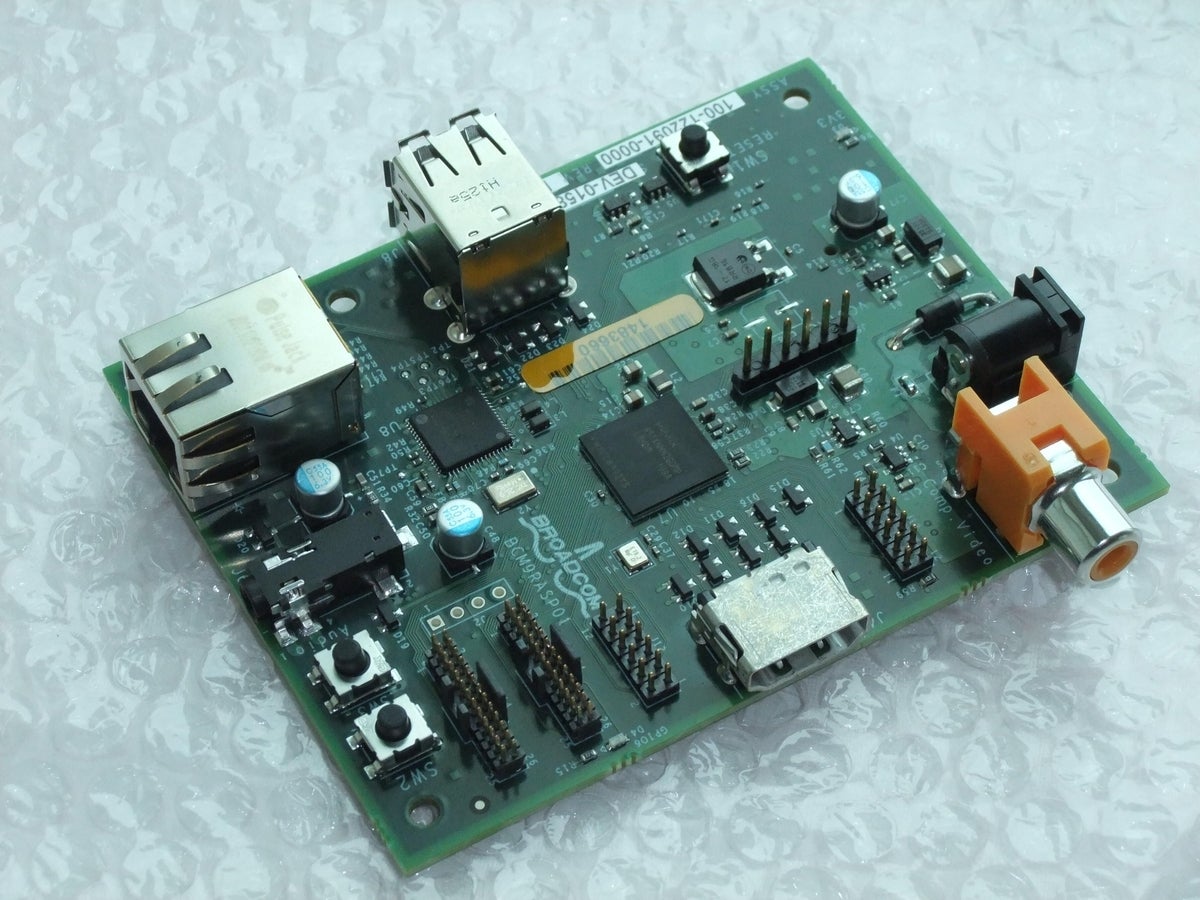
Image: Raspberry Pi Foundation
To pile on the pressure, Upton and Lomas soon found themselves working against a self-imposed deadline. The BBC’s coverage of a thumb drive-sized prototype of the Raspberry Pi had gone viral in May 2011–with the promise the Pi would be out within a year.
“Having nailed our colors very firmly to the mast, we had to then go and figure out how to make it true,” says Upton.
“So, the summer and autumn 2011 was me and Pete sitting down together and kind of cost-engineering the product down. So, figuring out what features we could discard, figuring out cheaper ways of implementing some features.”
The foundation faced an uphill battle. The founders had loaned the charity several hundred thousand dollars, enough to increase the initial production run of the Raspberry Pi from 3,000 to around 10,000 boards. However, the volume was still relatively low in terms of electronics manufacturing, and that was driving up the cost of components.
By August, the foundation had a reference design for the Raspberry Pi, and 50 Alpha boards that’d been built by Broadcom. This board was very different to the thumb-drive prototype shown off in May, and sported many features that would be found on the Raspberry Pi–a couple of USB 2.0 ports, 100Mbps Ethernet, microSD card reader, HDMI–and booted into the Linux Debian command line. It could even run a spot of the first-person shooter Quake III. The problem was it wasn’t close to where it needed to be in cost and was slightly larger than the desired credit card-size.
“Then it was a question of turning this $110 monster into a $35 practical solution,” says Lomas, adding that he and Upton spent from August through to December trying to work out how.
The battle to transform a $110 monster into the Raspberry Pi
Every component on the tiny board had to earn its place, and Lomas recalls some fiercely difficult decisions as he and Upton weighed up the relative merits of each part.
A case in point was how to hook up the Raspberry Pi to displays. They wanted the Raspberry Pi to be good quality and to work with newer TVs and monitors, which required HDMI, but also to be usable with old CRT monitors, which required VGA, and also older TVs, which required composite. Ultimately, Lomas says VGA would have eaten up too many of the peripheral pins on the chip–reducing the number of other features they could support–so they opted for HDMI and composite.
“We did it through hard work,” says Lomas. “We actually threw quite a few things off. We rationalized the I/O, we took bits off we didn’t need. There was a reorganization, a going-back back to basics. I was nicknamed the ‘hatchet man’.”
That battle played out for every part. Each component had to achieve a fine balance between cost, quality, and availability.
“It’s kind of easy to get one or two of the three, but it’s very, very hard to get all three together, so there was a lot of that kind of wrangling,” says Upton.
Download this article as a PDF (free registration required).
In some cases, Upton and Lomas used clever workarounds to drive the cost down. A dedicated audio chip on the original design was replaced by six resistors and capacitors and a piece of software that produces audio via pulse-width modulation. In other areas, they would cut specs with a view to rectifying shortcomings in later boards, for instance, choosing for the Raspberry Pi 1 a linear power supply, which Upton describes as “very inefficient” but that would be replaced with a “Rolls Royce-switching design” in later boards.
It wasn’t all cutting. One addition at the behest of Lomas was the 26-pin–40-pin on later boards–general-purpose input/output (GPIO) header, allowing the computer to control lights, switches, motors and interact with other boards using the Raspberry Pi. Despite being a late addition, Lomas describes it as a “massive part of Pi” that enabled a wide range of Pi-powered robotics. Upton agrees: “When you ask Cambridge applicants today ‘How did you get involved in computing?’ They all say, ‘Raspberry Pi and robotics’.”
By this stage Upton was juggling an 80-hour working week, fitting in working on the Raspberry Pi in the evenings, weekends, on planes, trains, whenever his job allowed. He even recalls getting on a flight from Heathrow while speaking to Lomas on the phone, “asking him for the BOM [bill of materials] so I could work on it on the plane”, a comment that could have made some of his fellow passengers a little nervous.
Throughout this period of concerted effort, there was no team of staff or extensive infrastructure to support Upton and Lomas–just a handful of volunteers working out of their homes.
“We started off with six people, no office, a couple of phones, and we did everything over email and Google. But there was an intense commitment to make it happen,” says Lomas.
By December, the design for the Raspberry Pi was finally where it needed to be, and in the week running up to Christmas Lomas made 20 beta boards at the Norcott Technologies factory in Cheshire.
That evening, just three days before Christmas, Lomas remembers switching on the first board, fresh off the production line, and a getting an unpleasant surprise.
“We had a heart-stopping moment where we powered the first one up on the bench and nothing happened,” he says.
“It turned out we’d just misread some of the documentation. It had gone through review and nobody had spotted it.”
Fortunately the fix for the problem, a disconnected voltage rail, could be resolved with a relatively simple bit of manual soldering.
When Upton arrived at the factory that same evening, Lomas was still fixing the last of the beta boards. Upton and his wife Liz, the foundation’s director of communications, had driven across the UK, returning from a holiday in Cornwall, their first break after six months of flat-out work.
“It was late in the evening when we turned up in Cheshire at Pete’s,” says Upton.
“I plugged one of the boards in, and that was a strange experience, because this is a machine which I know I can make for 25 bucks, and which is so much more powerful than any machine I had when I was a kid, massively more powerful than the Amiga I loved.”
This beta board was pretty much the computer that would become the very first Raspberry Pi, the Pi 1 Model B, which would launch on February 29, 2012. Upton and Lomas whittled the features on the $35 board down to two USB 2.0 ports, 100Mbps Ethernet, HDMI 1.3, 26 GPIO pin header, with a 700MHz single-core processor and VideoCore IV GPU capable of hardware-accelerated 1080p video playback. In keeping with the foundation’s educational mission and commitment to transparency, each board was available with a variety of Linux-based operating systems and a suite of programming tools.
Coping with success
However, the foundation now had a new problem–it was a victim of its own success. Upton and the board’s co-creators had started off thinking small for the Raspberry Pi, assuming they’d sell no more than 1,000. Even after the first public airing of the Raspberry Pi chalked up 600,000 YouTube views in just two days, the team behind the board were still cautious.
“Even though we had all this interest, we were still thinking that, in practice, the number of people who would be prepared to part with money would be much lower,” he says, explaining why the foundation had only revised the initial run of boards up to 10,000.
But the rocketing demand didn’t tail off, and the foundation’s ability to get boards made was starting to look like it would fall short, with 100,000 Raspberry Pis ordered when the board went on sale on February 29.
The foundation’s model of producing boards in batches of 10,000 at a time, with sales of one batch funding the manufacture of the next, was too slow to be practicable to meet such demand.
Matters were further complicated by supply-chain considerations, as well as excise and manufacturing costs, which forced the foundation to get the board built in China.
Upton and his colleagues realized the foundation needed a change in approach.
Download this article as a PDF (free registration required).
“We found that there was a lot of demand for the product, more demand than we could satisfy based on the capital that we had,” says Upton.
“So we changed it to this licensing model where we licensed the design to RS Components and Premier Farnell.”
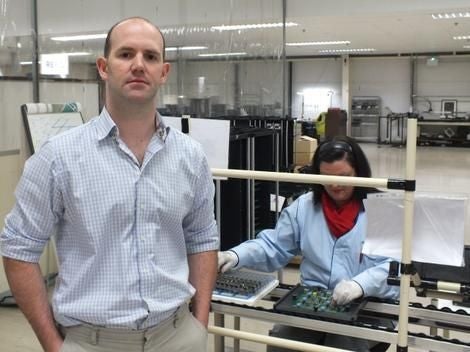
Image: Nick Heath / TechRepublic
Under the deal, Farnell and RS Components take care of the manufacture and distribution of Pi boards, subcontracting the manufacturing out to a third party — initially out of a factory in China, but since late 2012 from a Sony factory in South Wales in the UK.
Looking back, Upton believes this licensing deal was a crucial decision in helping the Raspberry Pi become the success it has been–allowing the foundation to build the Pi in much larger volumes and tap into those companies’ global distribution networks.
“The thing I’m still proudest of is that change, because that was the thing that unlocked the value. That was the thing that let us grow,” he says.
At the beginning of March, with 100,000 orders, massive buzz online, and the newfound ability to manufacture boards in bulk, Upton says he began to realize the scale of the Raspberry Pi’s appeal.
He recalls receiving the first bulk shipment of Raspberry Pi boards ready for sale.
“I remember taking a Raspberry Pi out of the top, these boxes of 50 stacked up on the pallet,” says.
“Taking one out of the top box, I took it into [foundation founder] Jack Lang’s living room, plugged it into his telly, and it worked. We went right down to the bottom of the pallet, to a random one in the middle, in case they put the ones that worked up at the top. We plugged that one in and it booted, and then we were like, ‘Yeah, this is gonna be a thing’. Then, we thought we might sell half a million units,” he says.

Image: Raspberry Pi Foundation
Since the launch of the Raspberry Pi 1 in 2012, that momentum hasn’t let up. In 2018, more than 22 million Pi boards have been sold across the world, with three generations of the Raspberry Pi released, most recently the Raspberry Pi 3 Model A+, a $25 board that is a massive upgrade over the 2012 launch machine. That success has funded an extensive educational outreach program, in 2017 teaching more than 150,000 children a week about programming via code clubs and educating more than 8.5 million people via the foundation’s online projects.
From six people running the show, it has now ballooned into an international organization, with offices in the UK and the US, and a subsidiary organization, Raspberry Pi Trading, to handle the engineering and trading activities. There is even someone who started out tinkering with the Pi as a schoolboy who now works on the hardware engineering team.
For Upton, the proof of the Raspberry Pi’s success lies not just in the tens of millions of boards sold, but in its ability to give a new generation the same sense of excitement he felt coding games on the BBC Micro all those years ago.
“Even early on you started to see those pictures of kids lying on the living room floor, looking up at the TV with Raspberry Pi plugged into it, the same way we used to,” he says.
Years later, those kids are heading to university, and the numbers applying to study computer science at Cambridge are climbing once more.
“We’re up to 1,100 people now–you’re starting to see everything making a difference.”
Upton is keen to stress that the Raspberry Pi is not one man’s creation, and from the early days has been the product of specialists who’ve worked on the hardware, software, promotion, case design, and so on. That’s truer than ever today.
“We love the Steve [Jobs] narrative, the Woz narrative. The world isn’t like that when you’re trying to build something as complicated as a Raspberry Pi,” he says.
A case in point is how the foundation built the huge community of Pi owners who regularly help each other and share their projects. That strong sense of community was largely crafted by Liz Upton, today the foundation’s director of communications, who in 2011 switched from working as a freelance journalist to volunteering for the foundation full-time and who Eben says “invented a lot of the techniques we still use to engage with our community”.
Looking back, while Upton is proud of what the foundation accomplished by launching the Raspberry Pi 1 in 2012, he says 2014’s Pi 1 Model B+ is basically the computer they set out to make.
“If you look at the Pi 1 B+, that’s the product that we wished we’d been able to make in 2012, but had to make sacrifices,” he says.
“We were able to add more GPIO, to rationalize the form factor, have more USB ports, have more efficient power.”
Realizing this original vision for the Raspberry Pi was made possible by the computer’s success. With more than 2.5 million Pis having been snapped up by tech hobbyists by the second anniversary of the computer’s launch, the low-volume challenges posed by the original board went away.
SEE: More Raspberry Pi coverage on TechRepublic’s Flipboard magazine
https://flipboard.com/@techrepublic/raspberry-pi-6a7msrr7yThe next release will be the Raspberry Pi 4, but Upton expects this will be a big departure from what’s come before, requiring moving to a completely new system-on-a-chip to allow for a faster and more efficient processor. It will be the biggest challenge since creating the Raspberry Pi 2, and Upton says the ambition is to release the board in the 2020-2021 timeframe.
Single-board computers are two-a-penny today, and you can’t move for tiny machines masquerading as the Pi–be they banana, orange, or blueberry-flavored. But how different would the world look if the Pi hadn’t been created?
“That’s a fascinating question–you can’t tell, right?” says Upton.
He speculates that maybe Arduino would have branched out from making microcontroller boards to build a low-cost general-purpose SBC or that BeagleBoards’ SBCs would have drifted down to the Raspberry Pi’s price. Perhaps he and the Pi’s co-creators simply got lucky.
“Maybe it was just an idea whose time had come, and we just happened to have got in the way of it.”
In some respects, it took a level of inexperience to create the Raspberry Pi, Upton says. If he and his colleagues had known more about the challenges they would face, they might never have begun.
“I think we were just naïve, you know?” he says.
“There’s a fine line between knowing little enough that you are prepared to try audacious stuff, and knowing enough that you can actually put together a team.
“In some ways, a lack of knowledge was a boon to us. We didn’t know what was impossible, and so we did an impossible thing.”
Download this article as a PDF (free registration required).